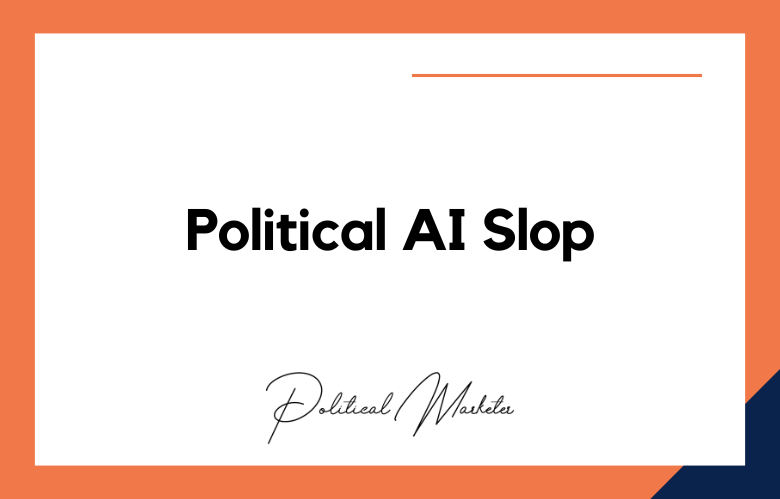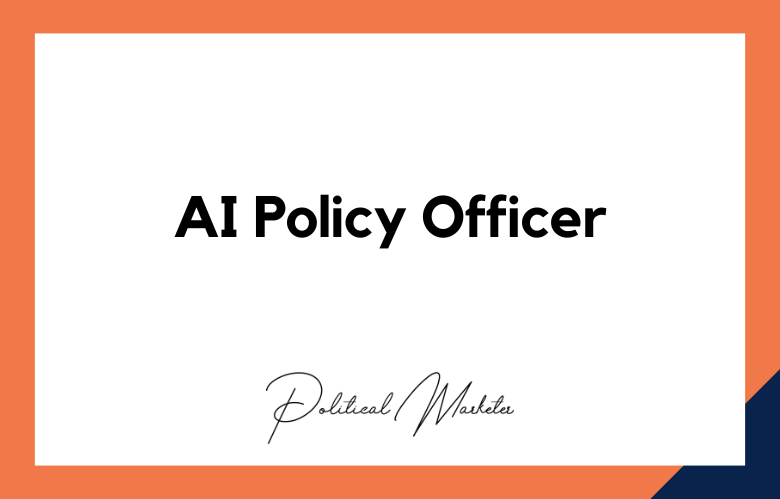A political campaign can succeed or fail depending on the strategies used to reach the public. The data can reveal more than just potential voters or volunteers but also show the people’s behavior and preferences.
Thus, creating a comprehensive data strategy is crucial in targeting high-priority voters, allocating resources effectively, and personalizing messages to reach the audience.
Discusses how incorporating first and third-party data can be a game-changer for political campaigns and help achieve their goals.
What is First and Third-Party Data?
First-party data is data that your political campaign collects directly from voters. This includes data gathered through events, surveys, online forms, and website analytics.
This data provides insights into your audience and can help you tailor your messaging and campaign tactics to suit their preferences.
On the other hand, third-party data is data you acquire from external sources, such as voter files, social media, and commercial data providers. This data can supplement your first-party data and help you fill the gaps in understanding your target audience.
How to Build a First-Party Data Strategy.
To start building your first-party data strategy, you must implement data collection methods across all campaign touchpoints.
This includes collecting volunteer data during phone banking and canvassing, encouraging attendees to sign up for email newsletters and events, and utilizing website analytics to track user behavior. You can also leverage social media to collect data by running surveys and polls on your social media accounts.
Using first-party data, you can develop targeted messaging and segment your audience into specific voter personas to make your campaign messaging more effective.
How to Build a Third-Party Data Strategy.
When building a third-party data strategy, working with reputable data providers with comprehensive data sets is essential.
Voter files are a common source of third-party data for political campaigns, which can provide information on voters’ demographics, voting history, and political affiliations.
Social media platforms like Facebook and Twitter also have advertising tools that let you target users based on their interests, behaviors, and demographics.
Commercial data providers like Experian and Acxiom can help you augment your existing data with additional insights into voters’ consumer behaviors and preferences.
How to Integrate and Analyze First and Third-Party Data.
To get the most out of both first and third-party data, it’s essential to integrate them into a centralized database or Customer Relationship Management (CRM) system.
This allows you to segment and analyze your data to find correlations and trends that inform your campaign strategy. Data visualization tools like Tableau and Domo can help you make sense of your data and identify critical insights.
You can use machine learning algorithms to automate data analysis and uncover patterns and relationships that are difficult to detect manually.
How to Build an Effective First and Third-Party Data Strategy for Political Campaigns.
Gone are the days when political campaign strategies only relied on demographic data gathered through phone surveys and door-to-door canvassing.
Modern political campaigns now employ sophisticated data strategies that utilize first- and third-party data to gain valuable insights into voters’ preferences and behaviors.
If you’re running a political campaign, you must incorporate first and third-party data into your strategy to optimize your targeting, messaging, and overall campaign effectiveness.
We’ll discuss what first and third-party data are and provide tips on how you can build an effective data strategy for your political campaign.
The Importance of First and Third-Party Data Strategy for Political Campaigns.
Data has become the lifeblood of political campaigns, and the ability to extract insights and target the right voters is necessary for success.
Data quality is critical today, and the combination of first and third-party data offers a remarkable opportunity for campaigns to engage effectively and efficiently with voters.
We will explain the basics of first and third-party data strategy for political campaigns and how they can make a difference in achieving campaign goals.
First-party data includes data from a candidate’s website, social media pages, and other owned channels. This type of data can consist of personal information such as name, email address, phone number, and age, amongst other things.
In contrast, third-party data refers to voter information obtained from outside sources, such as voter files or commercial data brokers.
Best Practices for First and Third-Party Data Strategy for Political Campaigns.
Importance of Data in Political Campaigns:
Data provides accurate and sufficient insight into constituencies, social groups, and voting trends.
In most cases, campaign teams adopt a manual approach to collect data—door-to-door surveys or phone calls—but the results may not serve an extensive purpose.
When a campaign uses data, it helps make decisions that will make them more effective, especially regarding their outreach strategies.
A campaign can employ many resources to gather information, creating a complete voter list that includes data regarding party affiliation, voting history, and demographic information.
Knowing your voters allows a campaign to allocate targeted resources to maximize their time and budget.
First-Party Data:
First-party data is data that the political campaign has collected on its own. Campaigns typically store this kind of data in their databases.
It can include voting history, donor information, event RSVPs, and sign-up data for their newsletters.
By using this data, campaigns can better understand who their supporters are and communicate effectively on issues and policies they care about.
Third-Party Data:
Third-party data is a record of someone else’s data. This may include data from civic organizations focused on getting people to the voting booths, information from data collectors in news media, and opinion research.
This data includes voter demographics, political party preferences, social media trends, and election results that can give a campaign an idea of possible voters’ leanings.
When mixed with first-party data, this data creates powerful insights that a campaign can use to persuade voters to support a particular candidate.
Personalized Messages:
By utilizing first and third-party data, campaign managers have a lot of insight into who their voters are and what messages will resonate with them.
Running data mining and machine learning allows political campaign teams to create more personalized messages for voters, addressing specific concerns and holding a one-to-one conversation with them.
Personalization yields a big pay-off in terms of the effectiveness of campaign materials. By crafting tailored messages, more supporters ultimately join the candidate’s camp.
Targeted Ad Campaigns:
With first and third-party data, campaign managers can run targeted ad campaigns beyond geographic or demographic factors. They can launch ad campaigns that include past voting behaviors and interests.
This allows campaigns to position themselves and the candidate in a way that appeals to individual voters—giving a sense that their interests and priorities align with a candidate’s campaign.
Conclusion:
Data is essential for political campaigns seeking insights, creating personalized messages, and strategizing on winning the election.
Combining first and third-party data makes this process much more effective, providing campaign teams with the correct ammunition to reach their goals.
A data-driven campaign is more efficient and accurate in reaching voters and is essential in driving public opinion in a candidate’s favor.
So, whether you have a bucket of first-party information or you are seeking to explore third-party data, hire a reliable political data management firm that can make data your secret weapon.
Call: +91 9848321284
Email: [email protected]
First and third-party data strategy for Political Campaigns: FAQs
What is first-party data in political campaigns?
First-party data refers to information political campaigns collect directly from voters, such as email signups, website visits, event registrations, and survey responses.
What is third-party data in political advertising?
Third-party data is information collected by external providers and aggregated from various sources, used to enhance voter targeting beyond what a campaign directly collects.
Why is first-party data more reliable for political targeting?
First-party data is more accurate and compliant because it’s collected with consent, allowing campaigns to personalize communication with greater trust and relevance.
How can campaigns collect more first-party data?
Campaigns can collect first-party data through digital forms, petitions, newsletters, event signups, volunteer registrations, and voter outreach efforts on websites or social platforms.
What role does third-party data play in voter segmentation?
Third-party data helps political campaigns identify patterns, demographics, and behavioral traits of voters outside their current base, expanding reach and refining strategy.
Are there risks associated with using third-party data?
Yes, risks include data inaccuracy, lack of consent, privacy concerns, and potential regulatory violations if data sources aren’t properly vetted.
How can political campaigns combine first and third-party data effectively?
By integrating both sources into a unified voter database or CRM, campaigns can cross-reference insights for more precise targeting, messaging, and media planning.
What tools help manage first-party political data?
CRM systems like NationBuilder, Aristotle, and Salesforce, along with analytics tools like Google Analytics and custom dashboards, help manage and utilize first-party data effectively.
How does data strategy impact voter turnout?
Effective data use enables personalized reminders, targeted persuasion, and mobilization efforts that significantly increase voter engagement and turnout.
Is it legal to use third-party data in political campaigns?
Yes, if it is done in compliance with regional data protection laws like GDPR or India’s DPDP Bill, and the data sources are transparent and consent-driven.
What are familiar sources of third-party political data?
Typical sources include data brokers, advertising platforms, public records, social media aggregators, and issue-based interest groups.
How does data personalization help in political messaging?
It enables campaigns to deliver the right message to the right voter based on interests, demographics, and behavioral indicators, boosting engagement and persuasion.
Can third-party data be used to retarget voters?
When integrated with platforms like Facebook or Google Ads, third-party data enables audience segmentation for retargeting political ads to specific voter groups.
What is voter file enrichment in data strategy?
Voter file enrichment supplements existing first-party voter databases with third-party insights to improve targeting precision and segmentation depth.
How do data partnerships influence political campaigns?
Collaborations with aligned organizations or platforms can provide access to richer datasets, co-targeting opportunities, and broader reach.
What privacy concerns should political campaigns consider with data?
Campaigns must ensure transparent data practices, obtain consent where necessary, and avoid intrusive profiling that may backfire ethically or legally.
How can A/B testing be used with first-party data?
Campaigns can optimize content based on open rates, click-throughs, and conversion actions by testing different messages on known segments from first-party data.
What’s the future of political campaign data strategy?
The future lies in zero-party data (explicitly provided by users), AI-powered predictive modeling, and stricter compliance frameworks to balance targeting with trust.
How do regulations impact third-party data use in elections?
Laws like GDPR and CCPA restrict how third-party data can be collected and used, requiring transparency, data minimization, and user opt-out options.
How can campaigns build a long-term first-party data strategy?
Campaigns can nurture a loyal, self-generated voter database by creating engaging experiences, opt-in campaigns, educational content, and consistent communication.










